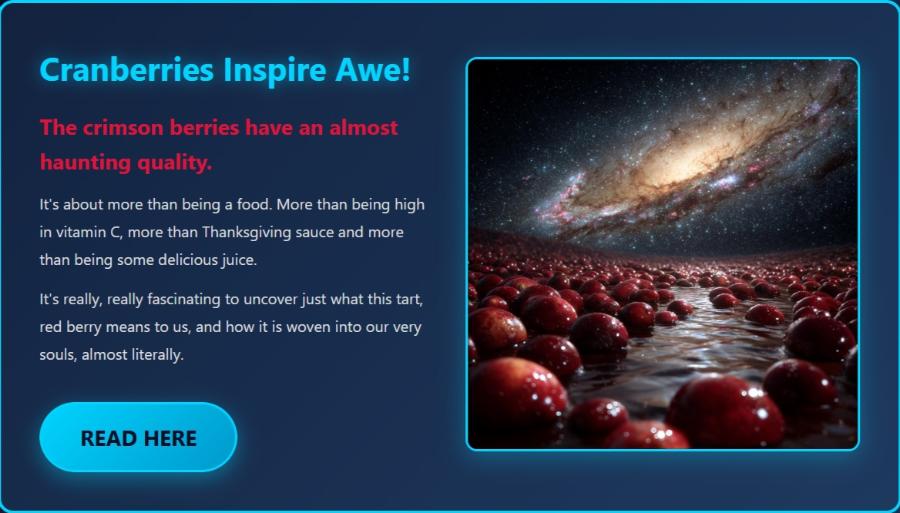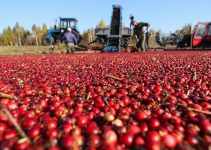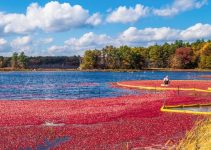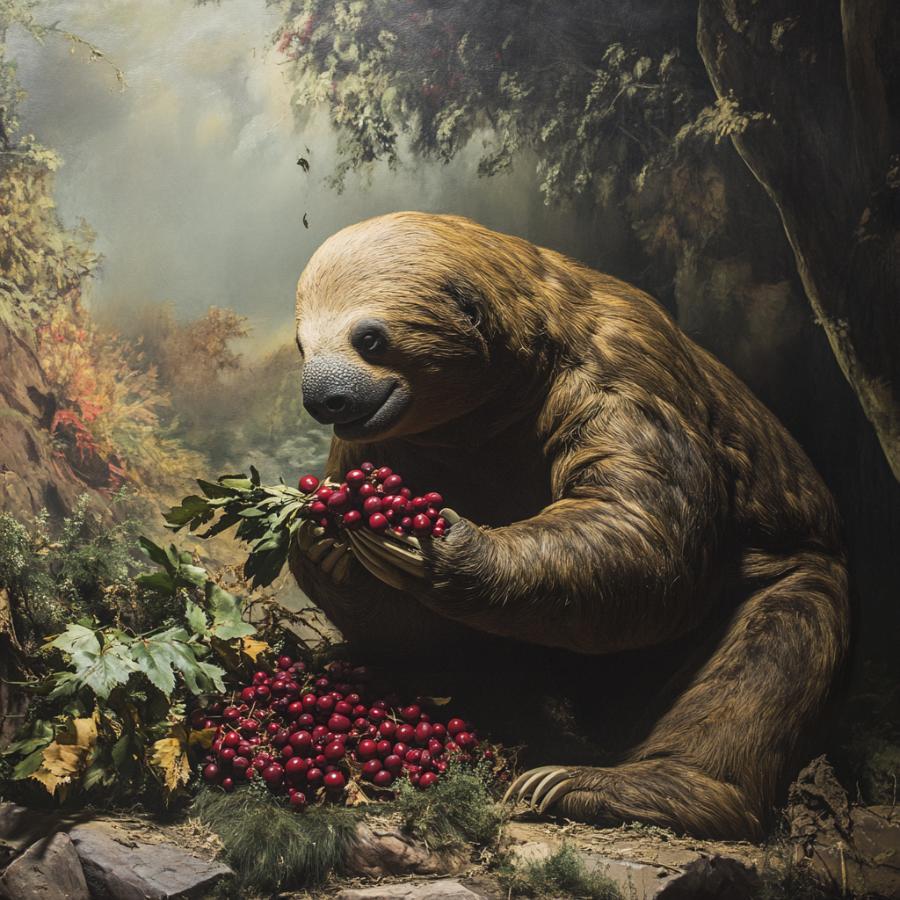
Giant Ground Sloth Eating Cranberries during the Ice Age
…
Cranberries, those small, red, and tangy berries, are not just popular with humans today—they’ve been a part of the diets of animals for thousands of years. These berries grow on low-lying shrubs in boggy areas, especially in North America, and they’ve been around for a very long time. In this blog post we’ll talk about which animals eat cranberries today and which ones might have munched on them 10,000 years ago during the Ice Age.
Animals That Eat Cranberries Today
Many animals that live in North America enjoy cranberries as a tasty and nutritious snack. Here are some of the most common ones:
1. Bears
Bears, like black bears and grizzly bears, love cranberries. In the fall, when they are preparing for hibernation, bears eat a lot of food to build up fat. Cranberries, along with other berries, are part of their diet because they’re easy to find in the wild and packed with nutrients.
2. Deer
White-tailed deer also eat cranberries, especially in the fall and winter when other food sources like grass and leaves are harder to find. Cranberries are a seasonal treat that helps them survive colder months.
3. Birds
Many birds enjoy cranberries, especially during migration or in winter when food is scarce. Wild turkeys, grouse, and even some songbirds like robins will eat cranberries if they’re available. Birds often help spread cranberry seeds to new areas by eating the berries and later dropping the seeds in different places.
…
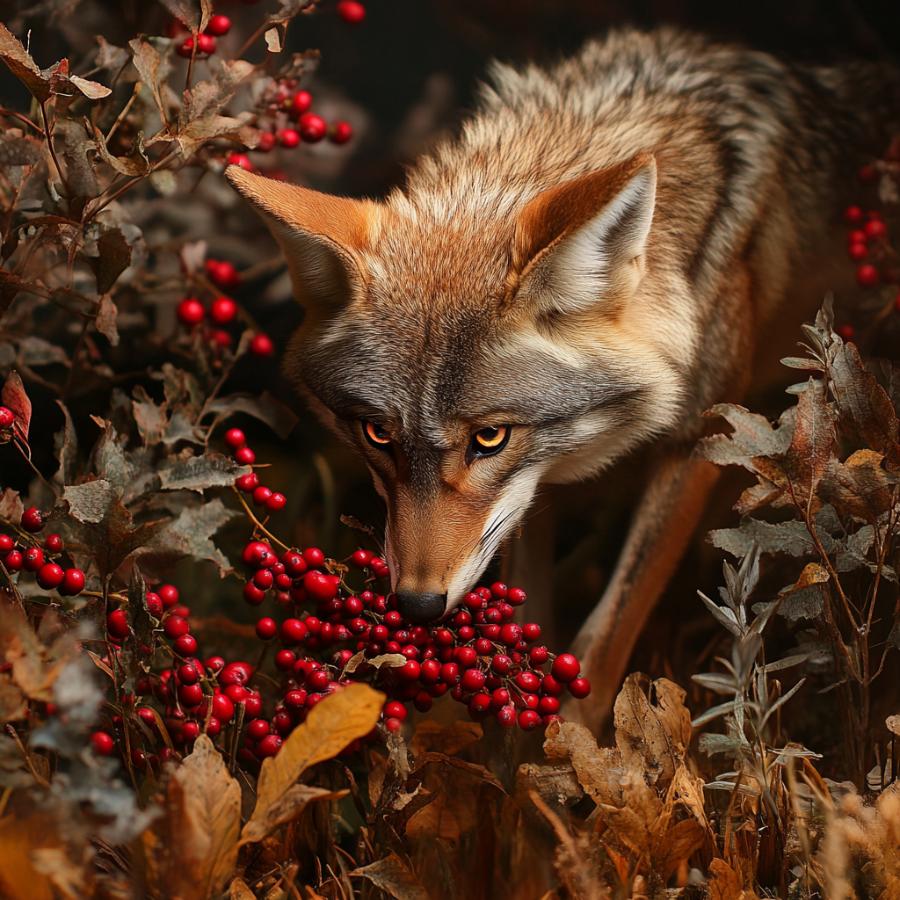
Coyote
…
4. Foxes and Coyotes
These clever mammals are omnivores, meaning they eat both plants and animals. Cranberries are a part of their diet when they need an easy source of food, especially in the wild.
5. Small Rodents
Animals like squirrels and mice might also nibble on cranberries. While they prefer nuts and seeds, cranberries offer a quick snack when other food isn’t available.
6. Beavers
Beavers, which live near wetlands, will sometimes eat cranberries along with other plants they find near their dams. Cranberries are a small but tasty part of their plant-based diet.
…

Mastodons ate Cranberries 10,000 years ago.
…
Animals That Ate Cranberries 10,000 Years Ago
Let’s travel back in time to the Ice Age, about 10,000 years ago. Back then, much of North America was covered in massive glaciers, and the landscape was colder and harsher. Even though cranberries grew in the icy, boggy environments, some animals still managed to snack on them. Here are a few Ice Age animals that might have eaten cranberries:
1. Woolly Mammoths
Woolly mammoths were huge, elephant-like creatures covered in thick fur. While their main diet consisted of grasses, shrubs, and other plants, they likely ate cranberries when they came across them. Cranberries would have been a seasonal treat, especially in the tundra and boggy areas where these animals roamed.
2. Mastodons
Similar to woolly mammoths, mastodons were large, elephant-like animals that lived in forests and wetlands. These animals ate a variety of plants, including fruits like cranberries. Since they lived in areas with cranberry plants, it’s likely that cranberries were a part of their diverse diet.
3. Giant Ground Sloths
Giant ground sloths were enormous, slow-moving creatures that ate plants. They used their long claws to pull down branches and gather food from shrubs and trees. Cranberries would have been easy for them to grab and eat, especially in wetland areas.
…

Giant, ice age Bears
…
4. Ice Age Bears
There were bears during the Ice Age, too, like the short-faced bear. These massive bears were omnivores and likely ate cranberries when other food sources were hard to find. Their diet included a mix of meat and plants, depending on what was available.
5. Caribou (Reindeer)
Caribou, which still exist today, lived during the Ice Age as well. These animals roam tundra and boggy areas, making cranberries a likely part of their seasonal diet. They’re known to eat a variety of plants, including berries, during their migrations.
6. Ice Age Birds
Birds that lived during the Ice Age, like ancient species of waterfowl and other migratory birds, probably ate cranberries. These berries would have provided a good source of energy during long migrations.
…
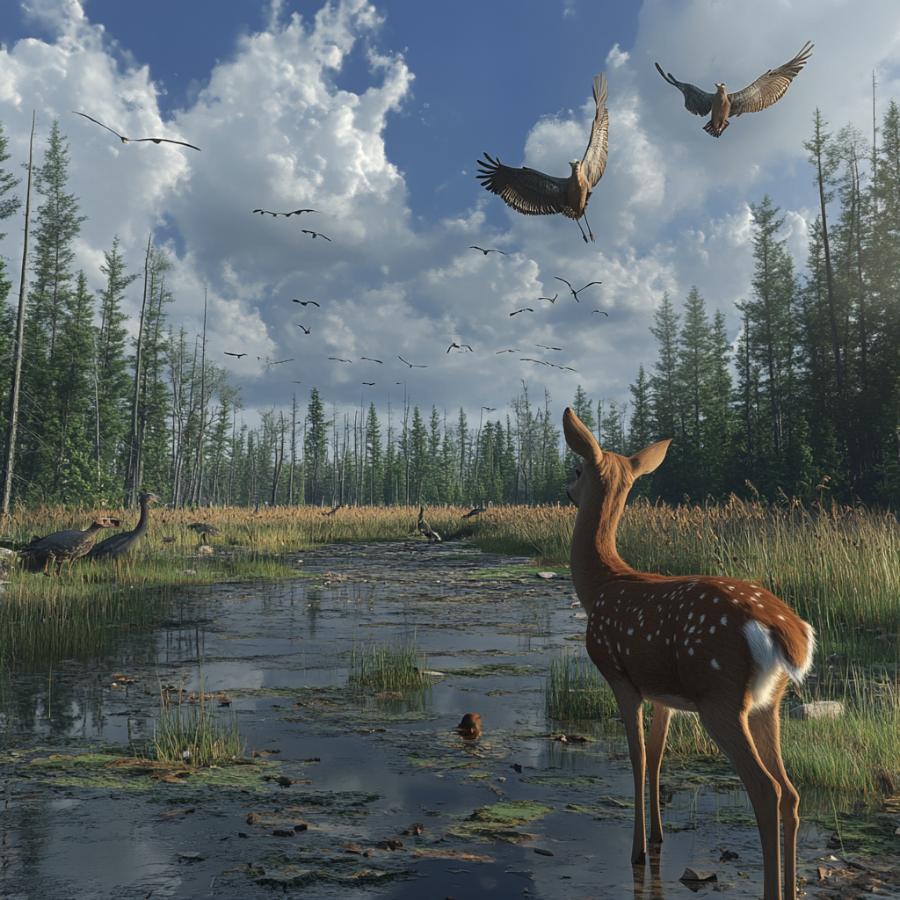
Present day Deer with Ice Age Birds 10,000 years ago in a Cranberry Bog
…
Then and Now
The animals that ate cranberries 10,000 years ago were much larger and more adapted to the cold climate of the Ice Age. Woolly mammoths and mastodons would have needed large amounts of food to survive, and cranberries might have been just a small part of their diet. On the other hand, today’s cranberry-eating animals are smaller, and cranberries play a bigger role in their diets during certain seasons.
Interestingly, both ancient and modern animals helped cranberries spread and thrive by eating the berries and dispersing their seeds. This natural process has ensured that cranberry plants have survived for thousands of years, providing food for countless generations of animals—and eventually humans.
Why Cranberries Matter to Animals
Cranberries are not just delicious; they’re also nutritious. They’re packed with vitamins and antioxidants, which help animals stay healthy. For example, the Vitamin C in cranberries can boost immunity, which is especially important for animals living in harsh climates. Cranberries also provide hydration because they grow in watery bogs and are filled with juice. These qualities make cranberries an excellent survival food for animals, both in the Ice Age and today.
Fun Facts About Cranberries and Animals
Cranberry Seeds Spread Far and Wide: When animals eat cranberries, the seeds often pass through their digestive systems unharmed. This helps new cranberry plants grow in different places.
Bears Love Berries: Cranberries are just one of many berries that bears enjoy. They’ll also eat blueberries, raspberries, and blackberries when they’re in season.
Birds Play a Big Role: Birds are some of the most important seed spreaders for cranberries. Without them, cranberry plants might not grow as widely as they do today.
Ancient Animals Shaped Ecosystems: Woolly mammoths and mastodons helped shape the landscapes where cranberries grew by trampling plants and spreading seeds.
Cranberries Are Cold-Weather Survivors: Cranberry plants thrive in cooler climates, making them perfect for both Ice Age animals and today’s northern wildlife.
– Cranby
